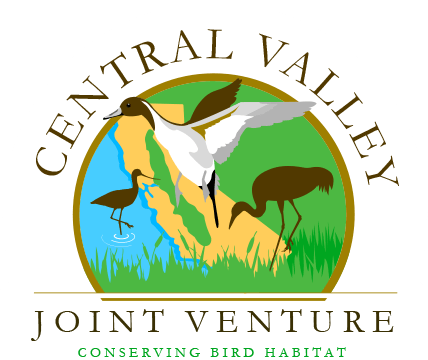Improving Habitat for Birds and Economic Viability for Farmers
As part of their work on nature-based solutions, the Sacramento-San Joaquin Delta Conservancy, a CVJV partner, is funding several multi-benefit projects to convert up to 10,000 acres of subsided land in the delta to managed wetlands or rice cultivation. The projects are designed to stop soil subsidence and reduce the resulting greenhouse gas emissions, while restoring wildlife habitat and supporting farmers.
Two of these multi-benefit projects, the Webb Tract Wetland Restoration and Rice Development Projects, will be operated on a Delta island owned by the Metropolitan Water District of Southern California. Together, these projects will establish 3,000 acres of managed wetland and 1,300 acres of rice cultivation. These projects will restore habitat for resident and migratory birds and will support the region’s salmon populations and the West Coast commercial salmon fishery.
These companion projects will be an important demonstration of how whole islands in the Delta can be managed to stop subsidence and associated greenhouse gas emissions, reduce the risk of levee failure, improve economic viability and resilience, and provide wildlife habitat. Construction on the Webb Tract projects is scheduled to begin in the spring of 2026.
A related project on Sherman Island, also in the Delta, is run by the State Dept. of Water Resources (a CVJV board partner). Photo shows previously constructed managed wetlands (in foreground) and construction activities for additional wetland acres – Dept. of Water Resources.
Suisun Planning Region
The Suisun Planning Region encompasses the Suisun Basin which totals approximately 152,000 acres and extends 20 miles from Vacaville on the north to the Contra Costa County line on the south. It is bordered by the Sacramento-San Joaquin Delta to the east and the Carquinez Straight and Coast Range to the west. The basin is dominated by the Suisun Marsh which is the largest contiguous estuarine marsh in the United States. The marsh is brackish and consists of 88,000 acres, including 52,000 acres of public and private managed wetlands, 6,000 acres of unmanaged tidal wetlands, and 30,000 acres of bays and sloughs. Historically the majority of the marsh was tidally influenced, however in the 1850’s levees were constructed to restrict tidal flow for agriculture and waterfowl hunting. Levees and tide gates now protect managed wetlands from tidal flooding and allow for wetland management activities. Grizzly Island Wildlife Area and numerous waterfowl hunting clubs own and manage the majority of these wetlands. Unlike much of the Central Valley, the marsh has a dependable water supply even in drought years, providing reliable habitat for migratory and resident waterfowl. Suisun Marsh is also an important waterfowl breeding area and supports one of the highest densities of nesting ducks in North America. The Suisun marsh Preservation Act of 1974 and the resulting Suisun Marsh Protection Plan (1976) protect the marsh from development.
